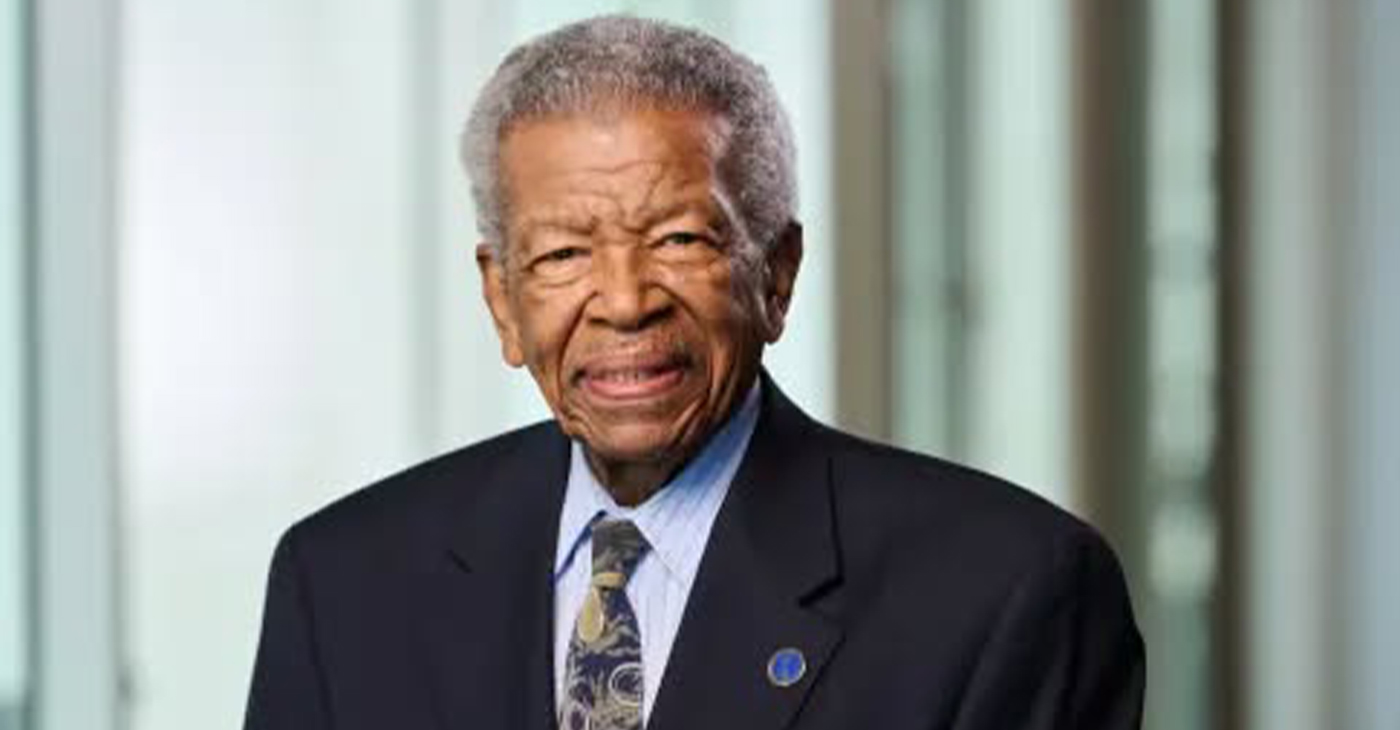Black History
Still Unsolved: The Cold Cases of Biggie, Tupac and Jam Master Jay
NNPA NEWSWIRE — As 2019 begins, the senseless murder of some of Hip-Hop’s biggest and most talented stars remains in the cold case files. “It’s a shame that we lost talented artists such as Tupac, Biggie and JMJ,” said Hip Hop activist and artist Sean XLG Mitchell.
By Stacy M. Brown, NNPA Newswire Correspondent
@StacyBrownMedia
Little did Tupac Shakur know, as he left a heavyweight boxing match in Las Vegas on Sept. 7, 1996, that his life was about to end.
With Death Row Records CEO Marion “Suge” Knight at the wheel and Shakur in the passenger seat, gunmen pulled up and pumped several bullets into Shakur who later died at University Medical Center, Las Vegas Valley.
He was 25.
On March 8, 1997, Shakur’s so-called East Coast rival and fellow Hip-Hop superstar, Christopher “Notorious B.I.G.” Wallace, presented an award at the Soul Train Music Awards in Los Angeles.
An afterparty was reportedly shutdown at about 12:30 a.m. because of overcrowding, forcing Wallace to leave with friends, including Bad Boy Records Founder Sean “Diddy” Combs.
Approximately 15 minutes later, as Wallace and the others traveled down a Los Angeles street, a black Chevy Impala pulled alongside the “Hypnotize” rapper’s vehicle and fired several bullets – four of them striking Wallace — who died a short time later at Cedars-Sinai Medical Center.
He was 24.
On Oct. 30, 2002, Jason “Jam Master Jay” Mizell sat in his Jamaica, Queens, recording studio in New York listening to new music.
An unknown assailant entered the building at about 7:30 p.m. and shot and killed Mizell, 37, who, along with his group Run-DMC, transcended Hip-Hop and paved the way for the commercial success of all Hip-Hop acts.
As 2019 begins, the senseless murder of some of Hip-Hop’s biggest and most talented stars remains in the cold case files. “It’s a shame that we lost talented artists such as Tupac, Biggie and JMJ,” said Hip Hop activist and artist Sean XLG Mitchell.
“I believe arrests haven’t been made on any case because of the dynamics involved in terms of the criminal elements: Possibly drugs, gang ties, and the ‘no snitching’ mantra in the Black community,” Mitchell said.
Last year, a cable television series titled “Unsolved” depicted the murders of Shakur and Wallace.
The three-part series, which aired on USA and Netflix and connected Shakur’s murder to an alleged gang war between the Bloods and the South Side Crips, was based on an LAPD task force investigation headed by Detective Greg Kading, who was initially assigned to work on Wallace’s case.
Kading, whose investigation ultimately took him to Las Vegas where he became involved in the Shakur murder probe, concluded that Orlando Anderson was Shakur’s murderer.
According to the series and numerous reports, the now former detective claimed in the series that Anderson’s uncle, Duane “Keffe D” Davis, revealed that Anderson and two other men – DeAndre Smith and Terrence Brown – were in the car together when Shakur was shot.
After Anderson was beaten up earlier that night, they went looking for Shakur at the 662 Club in Vegas. Keffe D said they found him on the strip and pulled up alongside the car, which was being driven by Suge Knight.
“All the chicks was like, ‘Tupac’, and he was like, ‘hey’ like a celebrity, like he was in a parade,” Keffe D said in an interview with BET’s Death Row Chronicles. “If he wouldn’t even have been out the window, we would have never have seen him.”
He would not go so far as to reveal who pulled the trigger but said it came from the backseat, narrowing it down to Anderson and Smith.
Anderson, who always denied that he was the murderer, died himself just two years after Shakur. No one has ever been charged in the murder. However, “Unsolved” creator Kyle Long has called for Keffe D’s arrest.
“He went live on television and confessed to being an accessory to murder and the Las Vegas PD, as far as I know, is doing nothing about it,” Long told The Wrap last year. “And I just think it’s outrageous. I just don’t understand it. It makes me upset.”
Long also spoke to Vulture and said, “What has happened since we made the show, which is fascinating to me, is that Keffe D went on a documentary called the Death Row Chronicles and confessed again.
“He doesn’t have immunity in that confession. He tried to get cute and says, ‘Oh, I handed the gun into the back seat, but I don’t know who pulled the trigger.’ You watch it, and it’s like, he just confessed without immunity to being an accessory to murder. They should go arrest him.”
That hasn’t happened.
Meanwhile, in 2017, New York City police detectives acknowledged that their investigation into the 2002 slaying of Jam Master Jay had gone cold.
“It’s not resolved to the legal eye, but the street always talks,” Jeremy “JL” Lam, a friend of Jam Master Jay’s family, told the Associated Press (AP).
Family members, however, reportedly were less optimistic.
“We know it’s anniversary, but we don’t like to talk about it much anymore,” Jam Master Jay’s older sister, Bonita Jones, said from their mother’s home in North Carolina.
A cousin, Ryan Thompson, believes the potential witnesses may never come forward because they “could go to jail as accomplices.” According to some reports, the 37-year-old Jam Master Jay hugged one of the men before gunfire erupted.
One round missed him but a second, fired from point-blank range, entered the left side of his head.
The men vanished.
Police said there were at least four other people in the studio at the time, but none provided enough details to produce fruitful leads. Thompson said a security camera in the studio was broken.
Prosecutors later identified a career criminal serving time for armed robbery as a suspect, but he denied involvement and was never charged, according to the AP.
Meanwhile, family, friends, fans and activists like Mitchell still hope for answers in the murders of Shakur, Wallace and Mizell.
“I believe there’s evidence that can’t be corroborated because of the number of people involved, which makes it dicey or risky to pursue any leads that are not going to result in criminal charges,” said Mitchell, the author of several books including “Hiphophooray: Celebrating 30 Years of Rap Music,” and “The Roof is on Fire: 101 Greatest Moments in Hip-Hop.”
“And you also have the face of racism involved too — that’s often overlooked — which is essentially the lives of black men don’t seem to have the same value as the lives of others, so why waste your time? Does it matter? Absolutely, I believe the family members of each victim deserve justice and closure and the only way to get it is with a conviction.”
Activism
Oakland Post: Week of November 26 – December 2, 2025
The printed Weekly Edition of the Oakland Post: Week of November 26 – December 2, 2025

To enlarge your view of this issue, use the slider, magnifying glass icon or full page icon in the lower right corner of the browser window.
Activism
Oakland Post: Week of November 19 – 25, 2025
The printed Weekly Edition of the Oakland Post: Week of November 19 – 25, 2025

To enlarge your view of this issue, use the slider, magnifying glass icon or full page icon in the lower right corner of the browser window.
Activism
IN MEMORIAM: William ‘Bill’ Patterson, 94
Bill devoted his life to public service and education. In 1971, he became the founding director for the Peralta Community College Foundation, he also became an administrator for Oakland Parks and Recreation overseeing 23 recreation centers, the Oakland Zoo, Children’s Fairyland, Lake Merritt, and the Henry J. Kaiser Convention Center.

William “Bill” Patterson, 94, of Little Rock, Arkansas, passed away peacefully on October 21, 2025, at his home in Oakland, CA. He was born on May 19, 1931, to Marie Childress Patterson and William Benjamin Patterson in Little Rock, Arkansas. He graduated from Dunbar High School and traveled to Oakland, California, in 1948. William Patterson graduated from San Francisco State University, earning both graduate and undergraduate degrees. He married Euradell “Dell” Patterson in 1961. Bill lovingly took care of his wife, Dell, until she died in 2020.
Bill devoted his life to public service and education. In 1971, he became the founding director for the Peralta Community College Foundation, he also became an administrator for Oakland Parks and Recreation overseeing 23 recreation centers, the Oakland Zoo, Children’s Fairyland, Lake Merritt, and the Henry J. Kaiser Convention Center.
He served on the boards of Oakland’s Urban Strategies Council, the Oakland Public Ethics Commission, and the Oakland Workforce Development Board.
He was a three-term president of the Oakland branch of the NAACP.
Bill was initiated in the Gamma Alpha chapter of Kappa Alpha Psi Fraternity.
In 1997 Bill was appointed to the East Bay Utility District Board of Directors. William Patterson was the first African American Board President and served the board for 27 years.
Bill’s impact reached far beyond his various important and impactful positions.
Bill mentored politicians, athletes and young people. Among those he mentored and advised are legends Joe Morgan, Bill Russell, Frank Robinson, Curt Flood, and Lionel Wilson to name a few.
He is survived by his son, William David Patterson, and one sister, Sarah Ann Strickland, and a host of other family members and friends.
A celebration of life service will take place at Henry J. Kaiser Convention Center (Calvin Simmons Theater) on November 21, 2025, at 10 AM.
His services are being livestreamed at: https://www.facebook.com/events/1250167107131991/
In lieu of flowers, donations can be made to the Euradell and William Patterson scholarship fund TBA.

-

 Activism3 weeks ago
Activism3 weeks agoOakland Post: Week of November 12 – 18, 2025
-

 Activism4 weeks ago
Activism4 weeks agoOakland Post: Week of November 5 – 11, 2025
-

 Activism2 weeks ago
Activism2 weeks agoIN MEMORIAM: William ‘Bill’ Patterson, 94
-

 Activism3 weeks ago
Activism3 weeks agoHow Charles R. Drew University Navigated More Than $20 Million in Fed Cuts – Still Prioritizing Students and Community Health
-

 #NNPA BlackPress3 weeks ago
#NNPA BlackPress3 weeks agoThe Perfumed Hand of Hypocrisy: Trump Hosted Former Terror Suspect While America Condemns a Muslim Mayor
-

 Bay Area3 weeks ago
Bay Area3 weeks agoNo Justice in the Justice System
-

 #NNPA BlackPress3 weeks ago
#NNPA BlackPress3 weeks agoProtecting Pedophiles: The GOP’s Warped Crusade Against Its Own Lies
-

 #NNPA BlackPress2 weeks ago
#NNPA BlackPress2 weeks agoTrump’s Death Threat Rhetoric Sends Nation into Crisis























































